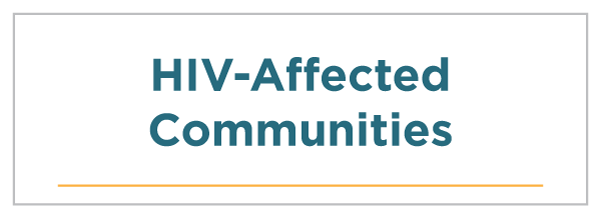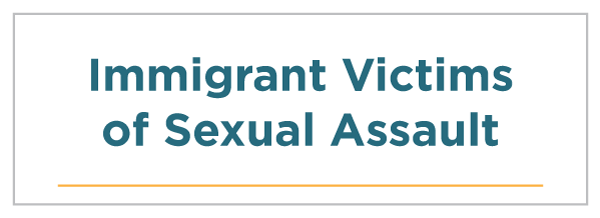
 |
 |
 |
 |
 |
 |
 |
 |
 |
 |
 |
 |
Location-Specific Communities
United States Territories
In addition to the 50 states and District of Columbia, the United States also consists of multiple island territories in the Caribbean Sea and Pacific Ocean. The U.S. Department of State defines "territory" as an area over which the U.S. government exercises sovereignty. This section focuses on SARTs on the five permanently inhabited territories of American Samoa, Guam, the Northern Mariana Islands, Puerto Rico, and the U.S. Virgin Islands. [271]
Because of their lack of permanent population, this document will exclude the U.S. territories of Baker Island, Howland Island, Jarvis Island, Johnston Atoll, Kingman Reef, Midway Islands, Navassa Island, Palmyra Atoll, and Wake Island. [272]
The U.S. territories are populated by a wide variety of linguistic, cultural, racial, and ethnic groups. The native populations of Guam and the Northern Mariana Islands belong to Micronesian ethno-linguistic groups, while the native inhabitants of American Samoa belong to Polynesian ethno-linguistic groups. [273] The majority of residents in the U.S. Virgin Islands are of African ancestry, [274] while the majority of Puerto Rican residents are Hispanics of white or Black ancestry. [275]
The population of the Northern Mariana Islands is diverse, with the majority of its residents of API ancestry. [276] U.S. military personnel stationed at military bases in the territories may come from any number of diverse backgrounds. English, Spanish and Spanish Creole, Filipino/Tagalog, Chamorro, and other Asian and Pacific Island languages are spoken in different territories. [277]
SARTs in the U.S. territories can serve their communities by offering linguistically appropriate and culturally sensitive services.
Incidence and Prevalence of Sexual Violence
Statistics on sexual violence in the U.S. territories are not plentiful. However, official reports and research studies can give SARTs some idea of the incidence and prevalence of sexual violence in some territories:
- One study of 1,575 adults in Puerto Rico found that 6.2 percent of respondents (2.5 percent of men and 9.6 percent of women) reported being forced to have sexual relations at some point in their lives. [278]
- Data from the National Child Abuse and Neglect Data System (2006–2010) found that Puerto Rico had a child sexual abuse rate of 0.1 male victims per 1,000 children and 0.4 female victims per 1,000 children. [279]
- In 2015, 160 reports of forcible rape came to the attention of Guam police. [280] The Office of the Attorney General of Guam handled 91 cases of criminal sexual conduct during fiscal year 2015. [281]
Challenges Confronting Victims
Depending on their location, culture, and history, sexual assault victims in the U.S. territories may face challenges to justice and healing. SARTs should be cognizant of these challenges and tailor their services to be sensitive to the needs of diverse victims. For example, historical trauma related to oppression and colonization may reverberate through the lives of victims belonging to Pacific Islander communities. [282] Sexual trauma can be exacerbated by collective emotional and psychological injuries of historical trauma, as discussed in the Culture and Diversity section.
Victims may also reside in small, insular communities, increasing the likelihood that victims and perpetrators may have personal connections to SART professionals. SARTs should strive to protect victim confidentiality in small communities where privacy is at a premium.
SARTs operating in small communities may also be isolated from other SARTs, stakeholders, and potential collaborative partners. Geographic isolation may prevent SARTs from sharing knowledge and resources, necessitating creative solutions for communication between distant SARTs. Collaboration within and between SARTs is a key to supporting victims and holding offenders accountable. All SARTs could benefit from additional collaboration with territory SARTs whenever doing outreach, conducting trainings, or seeking new resources.
Institutional challenges may also make it difficult for SARTs to collaborate or for victims to seek out services. For instance, civil liberties observers have criticized Puerto Rico's law enforcement for alleged corruption, brutality, and indifference. [283] Allegations of police abuses, especially against women, may make sexual assault victims reluctant to report their victimization to the police.
Police indifference to sexual violence may make it difficult, if not impossible, for victims to seek justice against their perpetrators. [284] SARTs may need to seek creative, community-specific solutions to institutional problems facing victims.
Existing SARTs in the U.S. Territories
Guam
Guam's SART is facilitated by the lead agency Healing Hearts Rape Crisis Center (HHRCC) with the Guam Behavioral Health and Wellness Center. HHRCC was established in 1993 and has been facilitating Guam's SART since 1999. Healing Hearts Rape Crisis Center is a member of the Guam Coalition Against Sexual Assault and Family Violence, and Guam's SART includes representatives from law enforcement, sexual assault providers, child and adult protective services, and military partners.
HHRCC Program Manager Maresa Aguon notes key tips for working with Guam's SART and victims of sexual assault as: (1) “Start by believing!” and (2) know where to start — as in how to navigate the system to support sexual assault victims.
Central to HHRCC programming is a holistic approach to helping individuals who have experienced sexual assault, regardless of when the assault occurred, through its supportive, healing care, so victims can regain feelings of safety, control, trust, autonomy, and self-esteem.
Central Northern Mariana Islands
The Central Northern Mariana Islands (CNMI) SART has a hospital-based SANE program, but it does not have a program dedicated solely to sexual assault advocacy. Sustaining the SANE program is a challenge due to the lack of trained examiners.
CNMI is an incredibly diverse community with different interpretations and views on sexual assault. There are community members who speak languages that have no words meaning "sexual assault." Understanding those language and cultural barriers is key to working in this community.
U.S. Virgin Islands
The U.S. Virgin Islands (USVI) SART comprises two district SARTs: one’s jurisdiction is St. Croix while the other’s jurisdiction covers two islands, St. Thomas and St. John. With most of the team members considering the USVI home, the commitment of each team reaches deeper than organizational goals and stems from the spirit of community and love for the people within.
While graduating from the infancy stage since its revitalization in 2017, the USVI SARTs share strong bonds with representation from multidisciplinary partners who are vested in the success of the team both professionally and personally. The territorial partners include a range of disciplines, from the USVI National Guard, the Bureau of Corrections, the rape crisis center, the hospital, the AIDS Education Training Center, and the USVI police department.
The USVI recognized its centennial in 2017, 100 years since the Danish West Indies became the USVI. While honoring its American history, the USVI community also embraces its Afro-Caribbean heritage by promoting ancestral traditions like storytelling, masquerade dancing, carnival, and serenade. These cultural traditions speak to the nature of the community and how residents relate to each other. For example, Virgin Islanders typically greet each other with “good morning” or “good afternoon,” even to a stranger.
Therefore, in sharing the messages of sexual assault prevention, the USVI SART engages its community by honoring simple yet meaningful practices such as these greetings, and even, “buenos dias,” as Spanish is the second most common language in the Virgin Islands after English. When working with the USVI SART or working with sexual assault victims who are from the Virgin Islands or neighboring Caribbean islands, consider a “proper greeting,” which can bring a feeling of “home” and connectedness to the work. [285]
U.S. Territory Resources
Asian/Pacific Islander Domestic Violence Resource Project
The API Domestic Violence Resource Project seeks to address and prevent domestic violence and sexual assault in Asian-American and Pacific Islander communities.
Asian Pacific Institute on Gender-Based Violence
The API-GBV is a resource center devoted to sexual violence and gender-based violence in API communities. API-GBV provides training, technical assistance, and research to a network of activists and service providers.
Territory Contacts
For additional information and territorial SART contacts and culturally specific tips for working with islanders from American Samoa, Guam, Northern Mariana Islands, USVI, and Puerto Rico, click on a link to each inhabited territory below.
American Samoa
Alliance for Strengthening Families
P.O. Box 982550
Pago Pago, AS 96779
684-699-0272
Facebook page
Guam
Guam Behavioral Health and Wellness Center (GBHWC)
790 Gov. Carlos G. Camacho Road
Tamuning, GU 96913
24-hour hotline: 671-647-5351
Guam Coalition Against Sexual Assault and Family Violence (GCASAFV)
P.O. Box 1093
Hagatna, GU 96932
671-479-2277
Northern Mariana Islands
Northern Marianas Coalition Against Domestic and Sexual Violence
P.O. Box 506689
Saipan, MP 96950
670-324-3878
Facebook page
Puerto Rico
Paz para la Mujer Coalición Puertorriqueña contra la Violencia Doméstica y Agresión Sexual
Apartado 193008
San Juan, Puerto Rico 00919-3008
787-281-7579
787-777-0739
U.S. Virgin Islands
V.I. Domestic Violence and Sexual Assault Council
4100 Sion Farm Shopping Center – Suite #1
Christiansted, VI 00820
340-719-0144
Rural SARTs
Rural spaces are home to vast, varied, and complex communities. People typically use the term rural to label lands and populations that do not fit under the classification of urban according to federal agencies such as the U.S. Census Bureau [286] or HHS. [287] Individuals may hear the word “rural” and think of one image or idea, yet rural spaces often contain an enormous diversity of populations, jobs, industries, cultures, languages, traditions, and landscapes.
These realities make for vibrant communities that have distinct advantages and challenges in responding to sexual assault. The SART Toolkit aims to include all remote and isolated areas including tribal land, frontier land, borderlands, and many islands or territories in this definition.
Defining rural:
- Remote or isolated suggests that it is difficult to access the area (such as towns in mountain regions or land not accessible by vehicles) as well as areas that have few surrounding communities.
- Frontier is generally understood as land with fewer than six people per square mile.
- Tribal land is typically found in rural regions and is often designated as sovereign nations for Native American/Alaskan Native individuals.
- Borderlands are areas that border another country or nation.
- Islands or territories may also be classified as rural with additional markers listed above.
When building and supporting a rural SART, team members and the agencies they represent must consider the realities of working in a rural area to effectively support victims and create conditions for them to report sexual assault and access services.
Sexual assault is one of the most under-reported crimes. [288] Depending on the community, there may be few or no reports and no prosecutions. Often, people in rural communities wonder why they need a SART if there are few reports to law enforcement. It is important for people in rural areas to understand that SARTs can create conditions that encourage people to seek assistance or report. In fact, the SART model is uniquely suited for rural communities, and two-thirds of SARTs exist in rural spaces. [289]
Rural SARTs can begin their work by asking, “What are the current barriers to seeking services and reporting sexual assault in our community?” Through exploring this question, rural SARTs can develop plans of action and set out steps that are meaningful to their specific community’s needs.
It is important to highlight and use the unique resources of communities to address service gaps with practical solutions in a rural SART. It is also important to understand the realities and particular challenges of serving sexual assault victims in rural communities. In many rural spaces, communities are close-knit, and there is a feeling that “everyone knows everyone.” These relationships can be an asset or a barrier for victims and SART members, when the same ties that are useful to disseminate information and build collaboration can cause challenges in maintaining confidentiality.
In rural areas, it may be especially advantageous to get the support of community leaders, such as local politicians or faith communities, in developing a SART. Rural SARTs can consider engaging community leaders in protocol development or as team members as appropriate. The key to developing a rural SART is to focus team development and collaboration from a place of strength and abundance; it is critically important for members to use their expertise and connections to the community to determine creative solutions to meet the needs of victims.
Defining Rural
Within the label of rural, there are a variety of sub-labels that advocacy groups, researchers, locals, and federal agencies may use to designate particular types of rurality. Some common terms from the field — though these terms have much debate about use, meaning, and political implications — are remote/isolated, frontier, tribal, and borderlands. The definitions provided here result from a blend of the most common forms and uses of the terms across the landscape of defining rural.
What matters most for practitioners, researchers, and technical assistance providers is to acknowledge that the concept of rural is vast and complex; few rural places are the same, though there are similarities. Each of these terms defines unique conditions that victims face in seeking care or reporting an assault. Each of these sub-labels provides further information about the specific realities of rural spaces. SARTs should discuss and address these realties and develop solutions that respond to the unique needs of each community.
Realities of Rural SART Work
While each community has its own set of considerations, many teams face common situations in developing and supporting a SART. General guidelines on the following topics can be found in the other sections of the SART Toolkit. This section explores the following factors as they relate specifically to building, sustaining, and maintaining rural SARTs.
Jurisdiction
Since SART members come from a variety of fields, their catchment areas and jurisdictional borders are often not neatly aligned. This is especially true in rural areas where neighboring jurisdictions are often accessed to fill service needs, like hospitals or SANE programs in different counties. Officials such as a rotating prosecutor or judge may be shared across jurisdictions.
A first step in creating a rural SART is to determine how to get the core disciplines of advocacy, medical response, law enforcement, and prosecution to the table. This may mean expanding membership beyond the SART’s originally conceived jurisdiction, or involving the use of technology. For a broader discussion, see the Define the SART’s Jurisdiction section of the SART Toolkit.
Build Team Relationships
Even before your SART meets, members should focus on building relationships within the community. Rural communities rarely have an overabundance of professionals. Each person may be covering multiple jurisdictions or responding to multiple kinds of crime. With few people doing much of the work, having a good working relationship across roles and professions is vital. Some ways to build relationships outside the SART meeting include having coffee, visiting each other’s workspaces, and attending fellow members’ community events.
Open communication within the SART meetings is also important. SARTs should ensure each member is empowered to engage in conversation and feedback without retaliation or disengagement from other agencies. Relationship building can be a slow process in rural spaces, especially if agencies have had previous difficult interactions.
Where relationships already exist, SARTs can build on those relationships. Making sure all members understand the importance of relationship building through honest and productive dialogue is central to the team’s success, especially if there is a small number of people covering multiple or large jurisdictions.
It is important to respect the knowledge of sexual assault each member brings to the SART, along with their own personal and professional life experience. From that beginning, the SART can model how to engage in curious questions, beneficial compromise, and mutual problem solving in order to build trust and understanding among team members. In order to do this, it is critical that the SART identify strong leaders from the community who have a deep understanding of sexual assault response.
Champions and Buy-In
SARTs, especially in rural areas, are typically created as a direct result of a champion or several champions engaged in the groundwork to build buy-in from agencies and community members. This might mean working with a high-level official or political figure to achieve needed momentum, or it may be a single individual working to establish MOUs or working relationships with SART member agencies. [290] SARTs that lack champions and coordinating leaders tend to falter or lose focus; it is essential to identify potential champions, especially those who can get other community members to buy in.
Within rural spaces, it is especially important to get the buy-in of leadership from involved agencies and the community, especially those who have held their positions for extended periods of time. Many SARTs can find an effective ally in their county attorney or prosecutor. Typically, leaders hold power over more than just their agencies in rural communities. For example, elected prosecutors may be able to bring local police to the table.
As your SART develops, it is important to re-evaluate leadership to meet the SART’s needs. Khnuma Simmonds-Esannason, the executive director of the U.S. Virgin Islands Domestic Violence and Sexual Assault Council (DVSAC), outlines the process and timeline of developing a SART in the U.S. Virgin Islands in The Value of Persistence. [291]
Meeting Logistics
When interested community partners are ready to begin the work of developing a SART, travel in rural spaces is often a barrier. SARTs should consider the following questions and brainstorm ways to address barriers that are identified:
- Who has to travel?
- How far do they have to travel?
- How often will they need to travel?
- Through what conditions will they need to travel?
- Does the agency have the capacity to support travel?
- o Is there someone who can take over their responsibilities while they travel?
- o What costs are associated with travel?
Regional SARTs or SARTs with a very large county or service area might consider rotating the meeting location or implementing virtual meetings to limit the travel time and costs for each agency. This can also improve attendance and participation. Ask team members how to address this issue in initial meetings.
Rural SARTs may implement video conferencing as part of SART meetings, considering —
- if the technology is safe,
- if the technology is private,
- what happens if the technology does not work, and
- what possible unintended harms might be caused by using technology or this specific technology?
Much more on meeting logistics can be found in the Meeting Logistics section of the SART Toolkit.
Community Partners
Many SARTs include service providers that receive disclosures of sexual assault, such as social services or culturally specific agencies. Rural areas must also consider their broader community. Determine whether a particular faith leader, an activity group like 4-H, state troopers, or other community organizations might be points of frequent disclosure within rural spaces.
In rural areas, SARTs and community partners can benefit from cross-training and developing a network of referrals to the SART as well as to various community organizations. This work encourages agencies to better support victims regardless of their engagement with the criminal justice system. The core team members representing advocacy, law enforcement, medical providers, and prosecution should discuss if and how other community partners can help improve disclosure and service-seeking by victims.
In rural areas, one person may represent an agency or direct the resources of an agency. In rural areas, identifying who that individual is and working to build relationships to identify buy-in — through traditional or creative means — may be critically important to SART development or success.
Sexual Assault Focus
Many rural areas have coordinated response teams or agencies that are dual or multi-service as a result of natural limits on staff time or the number of agencies local resources can support. To fully address sexual assault as a separate issue, it is necessary to have a team that deliberately and solely focuses on the whole spectrum of sexual assault in a community. This might mean that the group meets after another established meeting to focus specifically on sexual assault. The key is to not let sexual assault become a secondary issue that is occasionally addressed by other groups.
Need to Respond to Diverse Populations
Rural SARTs, like all SARTs, need to be aware of culture and diversity within their community. It may seem like little diversity exists in rural communities or that rural communities know about the varied populations in their jurisdiction, but it is important to recognize that your community may include people you may not be aware of. For example, a person being trafficked may be traveling through or working in your community. Or a student at the high school may have recently come out as LGBTQ.
Confidentiality
If a rural community is deeply connected, SARTs may find that victims are reluctant to seek help due to fears about confidentiality and privacy because they know people who are part of the response process. [292]
It is essential for the SART to understand the various laws and policies that govern confidentiality for each discipline and to develop practices that ensure respect for those requirements. SARTs can let the community know where confidential support is available so victims who fear disclosure due to close community ties have a place to find help. See the Confidentiality section of the SART Toolkit for further information.
Transportation
Transportation is often a barrier in rural areas, both for victims to seek care and for providers to provide care or meet with victims. SARTs can work with community partners and agencies to look for solutions, such as enlisting faith communities in providing transportation for victims, or specific fundraising to cover transportation costs for agencies.
Considerations After SART Formation
The sections below have been created to specifically speak to rural SARTs. Much more information on how to Build Your SART is included in the SART Toolkit, including Confidentiality, Meeting Logistics, Goals and Objectives, and SART Protocol.
Connect All Agencies
When developing a rural SART, organizers should consider how they can gain buy-in from all agencies in the SART’s service area, such as law enforcement and hospitals. If key members are absent from the team, consider reaching out to these professionals to talk about their lack of participation and their value to the team. Consider who might be the best person to make this contact. Brainstorm with team members about why this is happening and see if they have ideas on how to engage needed members.
If all efforts to engage them fail, SART organizers should consider how to make change in the community through the SART. Despite “missing members,” the team can make progress and may be successful enough that those who declined to join at first will come on board. Teams can also consider how to leverage community connections and relationships to encourage key agencies to participate on the SART in a way that honors the trauma-informed and victim-centered approach.
Develop the Knowledge Base of Members
SART members should have similar training on and understanding of what sexual assault is and how it manifests in the community. All communities and agencies, regardless of location, may have misinformation or misperceptions about sexual assault. Teams can disseminate foundational sexual assault information to members and discuss common myths. Additionally, team members should review current agency protocols and practices. Working from the same knowledge base and philosophy creates the base for long-term success of the SART.
Be prepared to hear a range of attitudes and beliefs expressed in your initial conversations. It is good to know how people feel about sexual assault, victims, offenders, and interventions. Knowing this will guide you in creating in-service and community education.
Determine Community Needs Before Establishing Goals
One of the first tasks of your SART is to take stock of the current state of sexual assault response in the whole community, especially in the community’s remote or geographically isolated areas. If a SART does not understand what is happening in their community, they cannot choose goals that meet the current needs of victims. Understanding needs includes learning about agency responses, victim experiences, area-specific victimization patterns, and reporting and service barriers.
By asking questions about the current state of the entire community and getting information directly from those who live in the area to be served, not just from team members, the SART can choose appropriate and meaningful goals that lead to true change in outcomes for victims. For example, learning that victims must travel to different counties to receive services or that remote areas do not have ready access to law enforcement will highlight areas where creative solutions are needed.
A SART can gather this information through a community needs assessment. See this section for ideas on how to build invaluable relationships during the needs assessment process.
Successful rural SARTs are sustainable because of innovations that overcome the barriers faced by all SARTs and those particular to rural spaces. In working with rural communities, SARTs can rely on local expertise, connection, creativity, and vision to drive the work. Additionally, technical assistance providers and resources are available for rural communities to help improve and sustain this work.
Rural Community Technical Assistance Providers
Minnesota Indian Women’s Sexual Assault Coalition
This organization develops resources and raises awareness about sexual assault against Indian women and children.
National Sexual Violence Resource Center: Rural Resources
The National Sexual Violence Resource Center (NSVRC) provides updated rural-specific resources and tools on their website and provides technical assistance to rural communities.
Praxis International Rural Technical Assistance Providers
This directory includes technical assistance providers that can assist rural programs.
This project provides resources, technical assistance, and support to state sexual assault coalitions.
Sexual Violence Justice Institute
This institute provides training and technical assistance around the criminal justice response to sexual violence.
Rural Community Resources
Benefits of a Coordinated Community Response to Sexual Violence (PDF, 2 pages)
This brief by AEquitas features the benefits of a SART, including higher reporting rates, less secondary victimization, and increased service utilization.
Break the Silence: Sexual Assault and the SART Solution (multimedia, 19:58)
This video by SANE-SART discusses what SARTs are, their goals, and how they can help victims feel more comfortable coming forward.
National Center for Rural Law Enforcement
This organization provides training and education to rural law enforcement agencies, including sexual assault training.
Praxis International is funded by the Office on Violence Against Women (OVW) to provide training and resources to OVW’s rural grantees.
This site includes an online library, topics, data visualization, case studies, and tools for professionals supporting health care in rural communities.
Rural Realities Blog: Technical Assistance, Tools, and Communications for Rural SARTs
This blog through the Minnesota Coalition Against Sexual Assault shares knowledge and resources on rural SARTs.
Rural SARTs: What the Research Tells Us (multimedia, 1:19:40)
Megan Greeson, assistant professor of psychology at DePaul University, presents preliminary findings on a research project about SARTs in rural communities.
This site provides access to online and on-site interactive learning for training SANEs.
SARTs 101 (multimedia, 1:31:08)
This webinar created by the Sexual Violence Justice Institute at Minnesota Coalition Against Sexual Assault covers the basics of SARTs in rural communities, including their importance, their challenges, and victim-centered responses.
Sexual Assault Demonstration Initiative: Final Report (PDF, 104 pages)
This report by the Sexual Assault Demonstration Initiative provides information on how programs targeting both domestic and sexual violence struggle to address sexual assault, particularly in rural areas.
Sexual Assault Response and Resource Teams (SARRT): A Guide for Rural and Remote Communities (PDF, 88 pages)
End Violence Against Women International developed a guide for SARTs in rural communities that discusses how rural communities can assess their needs, the barriers that may exist in rural communities, and goals for rural SARTs.
Sexual Assault Response Team (SART) Implementation and Collaborative Process: What Works Best for the Criminal Justice System? (PDF, 226 pages)
This study by Rebecca Campbell, Ph.D., Megan Greeson, Ph.D., Deborah Bybee, Ph.D., and Jennifer Watling Neal, Ph.D. examines the structure and functioning of U.S. SARTs, patterns of SART implementation, and how these patterns relate to SARTs’ perceived effectiveness at improving victim and legal outcomes.
Rural SART Resources
Arkansas Coalition Against Sexual Assault SART Information Page
This page explains how to build a SART in a rural area and provides contact information for training on forming a rural SART.
Frontier Area Health Education Center SART, Nevada
This SART provides telemedicine links and trains health providers and emergency responders in rural areas of Nevada.
Implementing SANE Programs in Rural Communities
This guide details the experience of four counties in West Virginia as they implemented and sustained sexual assault nurse examiner (SANE) programs.
This email group promotes ongoing conversation and information sharing between SARTs across the country.
Northern Hills SART (South Dakota)
This SART, formed in 2010, includes representatives from law enforcement, states’ attorney’s offices, hospitals, a domestic violence and sexual assault shelter, and a local university.
Sexual Assault of Americans Overseas
Serving the needs of sexual assault victims who are assaulted outside the United States can be challenging. Coordination and collaboration among service providers both in the United States and abroad can make it easier. SARTs can help meet the needs of victims assaulted in different international settings: study abroad programs, cruise ships, passenger flights, and humanitarian settings.
Many countries have centers to help sexual assault victims, providing medical treatment, forensic examination, counseling, advocacy, and access to law enforcement. [293] It is worthwhile for SARTs in the U.S. to explore how they can collaborate with overseas centers to see how they can help meet the needs of Americans victimized abroad.
SARTs can also collaborate with organizations that specifically serve Americans who have been sexually assaulted outside the country, such as Sexual Assault Support and Help for Americans Abroad (SASHAA). [294]
This section of the SART Toolkit focuses on sexual assaults against Americans in four international settings:
- Study Abroad Programs
- Cruise Ships
- Passenger Flights
- Humanitarian Settings
Americans Abroad
Many Americans travel overseas for work or pleasure. Travelers can be assaulted by citizens of other countries or by other Americans. Intimate partner violence (IPV) victims may be at a higher risk because they have few or no reporting options while abroad. Youth and others who travel with teams may also be at risk for sexual assault by other Americans who are part of the teams.
When an assault occurs, the jurisdiction of the crime can make it complicated to provide services to victims and hold offenders accountable. SARTs can proactively work with local, state, and federal authorities to establish protocols that define jurisdiction and support for victims who are assaulted abroad and then seek support or make their initial report at home.
Study Abroad Programs
SARTs can approach colleges and universities to work together to prevent and respond to sexual assault in study abroad programs, which can help improve the accountability of higher education institutions. Training and collaboration between campus SARTs, international SARTs and multidisciplinary centers, U.S. embassy staff, faculty directors who oversee study abroad programs, and other stakeholders can help create a coordinated response that meets the needs of victims.
Research on sexual victimization among students who study abroad includes the following:
- In one study of 208 undergraduate women who studied abroad, 18.8 percent of respondents reported experiencing sexual assault during their time overseas. [295]
- In another study of 218 undergraduate women who studied abroad, 27.5 percent reported nonconsensual sexual contact while overseas. The most common offenders were non-student local residents (86.8 percent). [296]
- A study of 173 university students who participated in study abroad programs found that 31.2 percent reported an uncomfortable or unwanted sexual experience while overseas, and 2.9 percent reported sexual assault. Significant percentages of the respondents felt that their institution normalized sexual assault or created an environment where assault seemed more likely to occur. [297]
Cruise Ships
Cruise ship professionals can explore options for creating sexual assault responses like SARTs to help passengers who experience sexual assault at sea. SARTs can explore collaborations with security and medical staff on cruise ships that embark and disembark in their communities, and develop a referral process for victims who report an assault after returning from a cruise.
Research on sexual assault on cruise ships shows the following:
- Dr. Ross A. Klein of the Memorial University of Newfoundland reported during a 2007 federal hearing on cruise ship crime that the rate of sexual assault on cruise ships at the time was almost 65 per 100,000, twice the rate of the U.S. general population. [298]
- After drawing data from three data sets, Klein and Poulston (2011) calculated rates of cruise ship sexual assault ranging from 45 to 115 incidents per 100,000 persons:
- o Most victims were female, and 11 percent to 17 percent of victims were minors.
- o Most perpetrators were male, and sizeable percentages of offenders were cruise crewmembers.
- o Staff who worked alongside passengers, such as room stewards, waiters, bar workers, and officers, were the most common types of crewmember offenders, according to two of the three data sets. [299]
Federal hearings in 2006, [300] 2007, [301] and 2008 [302] addressed crimes against Americans on cruise ships. The Cruise Vessel Security and Safety Act of 2010 (CVSSA) mandated that cruise ships that embark and disembark in the U.S. report crimes to the FBI. [303] With regard to sexual assaults on cruise ships, CVSSA mandates that cruise vessels —
- stock materials and medications for forensic exams,
- include medical professionals on staff who can assist sexual assault victims, and
- provide victims with free and immediate access to service providers or authorities (e.g., local law enforcement, U.S. Coast Guard, the nearest U.S. embassy). [304]
Passenger Flights
SARTs operating in communities with airports can explore ways to prevent, address, and document sexual assaults onboard passenger flights by seeking out collaboration opportunities with airlines, Federal Aviation Admission (FAA) personnel, and consumer organizations.
The number of sexual assaults on airplanes departing from and landing in the United States is unknown. Legislative attempts were made through the Protecting Airline Passengers from Sexual Assaults Act of 2014 to compel the FAA to collect data on sexual assaults occurring during passenger flights, but the bill was not passed. [305]
Airlines and SARTs can work with victims who were assaulted on flights to develop recommendations to keep all passengers safe.
These are suggestions for preventing assaults on passenger flights from victims:
- Lights should never be completely shut off. Passengers can use eye masks if they want to have complete darkness to sleep.
- Implement multiple flight attendant checks throughout the night and train flight attendants to look for specific behavior and intervene as needed.
- Include a safety announcement on overnight flights as a deterrent to predatory actions such as, "We will make random checks throughout the flight to make sure everyone is safe and calm."
- Train airline staff on causes of vulnerability to assault, such as the use of medications and alcohol by passengers to relax, sleep, or reduce anxiety.
SARTs can work with airlines to update protocols and conduct training with crewmembers that address these issues:
- How flight attendants can respond during the flight.
- Communicating with the pilot that a sexual assault occurred.
- Policies addressing when to land the plane.
- Procedures for determining jurisdiction while in flight.
- Procedures for contacting local law enforcement before landing so they are present to support the victim, apprehend the offender, collect evidence, and question any witnesses.
Humanitarian Settings
SARTs operating in the United States and foreign countries can develop strategies for preventing and responding to sexual assaults of humanitarian personnel abroad. SARTs can draw upon investigation resources from organizations such as the CHS Alliance in cases of personnel-on-personnel sexual assault. Cooperation between SARTs, aid organizations, embassy staff, and other stakeholders could improve responses to sexual assaults of humanitarian workers.
The extent of humanitarian worker sexual assault is challenging to document. The Aid Worker Security Database, a project of Humanitarian Outcomes, records incidents of violence against humanitarian workers. As of the time of this writing, however, only 42 cases of sexual assault have been recorded in the database. [306]
Report the Abuse, a campaign launched by the International Women's Rights Project, seeks to raise awareness of sexual assault against humanitarian and development workers around the world. The campaign invites humanitarian workers to report their sexual assault experiences via an online survey. [307]
As of the time of this writing, Report the Abuse had received reports of 108 attacks against humanitarian workers from 1995-2017. Most incidents involved unwanted touching (21 percent) or attempted sexual assault (15 percent). The majority of victims were female (89 percent), while the overwhelming majority of offenders were male (92 percent). Offenders were frequently expatriates (52 percent), followed by locals (24 percent) and staff (12 percent). [308]
The U.S. government has taken steps to address sexual assault against humanitarian workers, particularly in the Peace Corps. The Kate Puzey Peace Corps Volunteer Protection Act of 2011 is intended to ameliorate challenges facing sexual assault victims serving in the Peace Corps.
The legislation requires the Peace Corps to —
- develop a comprehensive sexual assault policy,
- designate sexual assault response liaisons for each country program, and
- implement sexual assault risk reduction and response training.
The act also granted the president the authority to establish an Office of Victim Advocacy in Peace Corps headquarters and an independent Sexual Assault Advisory Council. [309] In the wake of the legislation, the Peace Corps launched its Sexual Assault Risk Reduction and Response Program in 2013. [310] The independent Sexual Assault Advisory Council reviews the development and implementation of the program.
Opportunities for international collaboration between humanitarian agencies and SARTs remain to be explored and documented. The need for these collaborative efforts has been acknowledged. In a 2015 report, the Sexual Assault Advisory Council encouraged the Peace Corps to develop a pilot for multinational collaboration that would make use of existing services and resources in its operating regions. [311]
Resources for Americans Assaulted Abroad
Study/Travel Abroad Resources
OVC News & Program Updates: Global Victimization (PDF, 9 pages)
This newsletter from the Office for Victims of Crime features several articles on American victimization abroad, including examples of how service providers can serve this population and information on victims’ rights outside the U.S.
Resource Guide for Serving U.S. Citizens Victimized Abroad
This comprehensive guide is available from the OVC to help domestic service providers and allied professionals assist U.S. citizens who have been victimized abroad. It provides guidelines for coordinating victim services for American crime victims outside U.S. borders.
Sexual Assault Support and Help for Americans Abroad
This site offers information for prevention and response to American sexual assault survivors overseas
Sexual Assault Victimization Among Female Undergraduates During Study Abroad (PDF, 14 pages)
This article from the Journal of Interpersonal Violence discusses sexual assault rates of female students abroad. The study focuses on U.S. undergraduate students and the results found high assault or attempted assault rates of students abroad.
Aid Worker Resources
The Aid Worker Security Database, a project of Humanitarian Outcomes, is a record of incidents of violence against aid workers from 1997 to the present.
Cruise Ship Resources
This report of criminal activity on cruise ships via The Cruise Vessel Security and Safety Act covers incidents from December 2010 to the present.
Cruise Vessel Security and Safety Act of 2010 (PDF, 10 pages)
This is an amendment establishing security and safety procedures for passengers and crew on cruise ships, with an emphasis on sexual assault.
Peace Corps Resources
Kate Puzey Peace Corps Volunteer Protection Act of 2011 (PDF, 12 pages)
A law amending the Peace Corps Act to include protection for sexual assault victims, sexual assault risk reduction, and response training.
Peace Corps Gang Rape: Volunteer says U.S. Agency Ignored Warnings
This ABC News article exposes the high rates of rape among American women serving as Peace Corps volunteers in foreign countries and the agency’s lack of action.
Peace Corps - Sexual Assault Advisory Council: Annual Report (PDF, 48 pages)
This report from the Sexual Assault Advisory Council presents findings and recommendations to enhance the response of Peace Corps to volunteers who have experienced sexual assault.
Peace Corps volunteers blamed, punished for reporting sexual assault
This news article from CBS News exposes the high rates of sexual assault in the Peace Corps and the under-reporting of it to authorities. Additionally, it looks at the unsympathetic response to trauma victims, including victim-blaming.
| Back | Index | Next |
